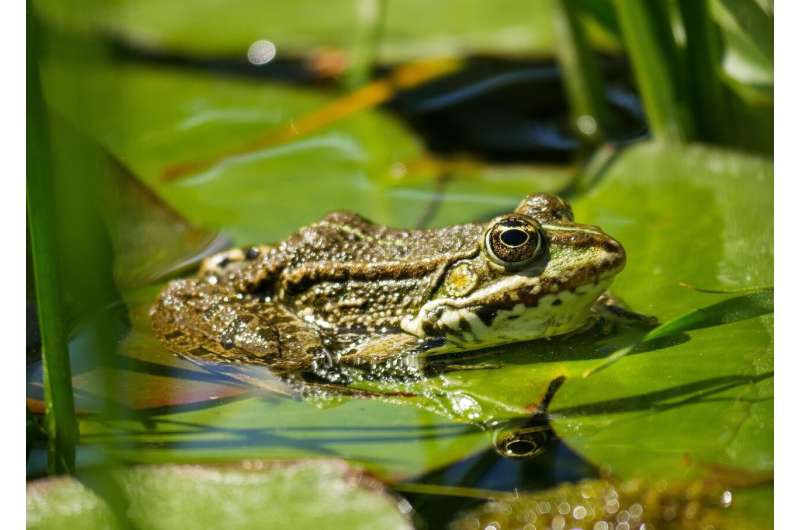July 25, 2019 report
Brain parts involved in parenting in frogs revealed

A team of researchers from Stanford University, Harvard University, Centro Jambatu de Investigación y Conservación de Anfibios and East Carolina University has isolated the brain regions involved in poison dart frog parenting. In their paper published in Proceedings of the Royal Society B, the group describes their study of three types of poison dart frogs and what they learned.
The researchers began their study by noting that most frogs lay eggs and walk away, leaving their young to fend for themselves—but three particular types of poison dart frogs are different—they stick around and help their young survive. With one type, the mother cares for the young; with another, it is the male that does the job, and the parents of a third type work together. The researchers thought this intriguing characteristic might help them figure out which parts of the frog brain were involved in parental care-taking. They captured and killed 25 frogs while they were engaged in carrying their young from their hatching site on land to the water. The researchers assumed that brain regions involved in parental care would be lit up during this activity. The team immediately froze the brains to preserve their neural state, then looked at brain slices under a microscope.
The researchers report that in all of the frogs caught mid-carry, the preoptic parts of their brains were lit up. Comparison with their mates and other frogs showed this was a unique situation. The researchers note that their finding was not a surprise, as preoptic parts of the brain firing during parental behavior has been observed in other vertebrates, including mammals. The researchers suggest that such similarities between vastly different types of creatures indicate that parenting behavior is likely quite ancient.
The researchers note that the medial pallium in the frogs was also active. It is a region in the frog brain that is similar to the hippocampus in mammals, and is involved in memory processing. The researchers suggest the frogs were using memory maps to navigate the course between hatching sites on land to the nearest water source. The team plans to continue their research by testing to see if they can turn parental behavior on and off by stimulating brain regions.
More information: Eva K. Fischer et al. The neural basis of tadpole transport in poison frogs, Proceedings of the Royal Society B: Biological Sciences (2019). DOI: 10.1098/rspb.2019.1084
Journal information: Proceedings of the Royal Society B
© 2019 Science X Network


















